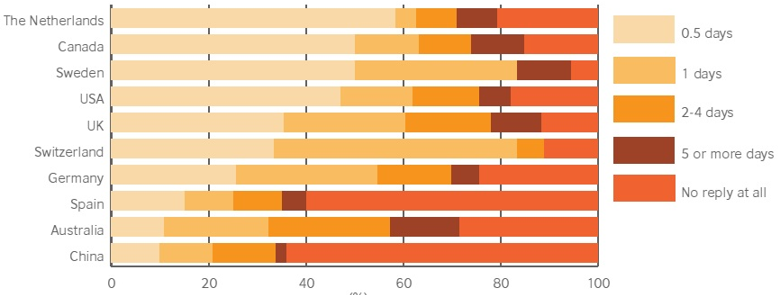Article by Thijs van Vugt and Julian Longbottom
Thijs van Vugt and Julian Longbottom look at the skills and tools needed to be successful in helping students make the decision to enrol at your university.
In today’s competitive environment, international marketing, recruitment and enrolments are becoming more and more important to universities across the globe. The reality, however, is that most universities are doing very little marketing, but a lot of recruiting… or rather selling. Yet, the follow-up from enquiry to offer letter and enrolment could be done better at many institutions.
A recent StudyPortals and IELTS British Council study of the Top 500 universities in the world revealed that 21 per cent of the world’s Top 500 universities did not respond to enquiries at all. What’s more, 68 per cent of institutions that did reply, didn’t send a second email or reminder (StudyPortals & IELTS British Council, Through Student Eyes, 2014). Australian universities did fairly poorly compared to most others!

Source: Through Student Eyes, StudyPortals & IELTS British Council, 2014
Responding to requests for information has been neglected in many traditional institutions where the focus has been on filtering applicants rather than proactively recruiting new students. But, it is imperative that we reach out when the interest is most relevant and that time is now. Being first also allows the recruitment team to manage expectations that subsequent callers must match or better.
More often than not admissions does not fall under the same responsibilities as marketing and recruitment. As a result admissions staff think their job is done once the offer letter has been sent. The reality, however, is very different. The job is not done until the student has signed on the dotted line and paid their tuition fee. Up until that moment the student can still decide to accept an offer from a competing university – particularly if that offer came from a better quality university or included a full or partial scholarship.
They will also accept an alternative offer if the competing university is faster in following up on the offer letter or done so in a more compelling way by (e.g. a personal phone call from the vice-chancellor or dean). But, most importantly, one has to follow-up and follow-up fast on the offer letter by making sure the student either accepts or rejects their place. Especially, when considering that students apply to at least three, if not five, universities at the same time.
If admissions staff do not have the requisite skillset to follow-up and close the deal (which the marketing and recruitment people hopefully do), then they should at least inform those who do about the admissions decision to follow-up. This is where customer relationship management (CRM) systems come into play.
Good CRM systems, designed specifically for education providers, allow all concerned to see the status of a prospective student’s enquiries, applications, offers, etc. as well as offering the possibility to have a student portal in which the student can track the status of his/her application in real time. At best these portals can be accessed on any device, anywhere in the world.
These systems also provide insight into the sources through which a student may have come in touch with the university (e.g. website), as they allow for source tracking. This will allow you to link enquirers, applicants and commencing students to your marketing activities, whether they be online education portals, AdWords campaigns, education fairs or agents. And once you have this information, calculating the return on investment of your marketing spent becomes quite straightforward.
Interested to find out more? Join our workshop ‘From enquiry to enrolment: the essential toolkit’ at AIEC in Adelaide this October!
Thijs van Vugt is Director and Partner at iE&D Solutions, Europe.
Julian Longbottom is Director Asia Pacific at StudyPortals.



